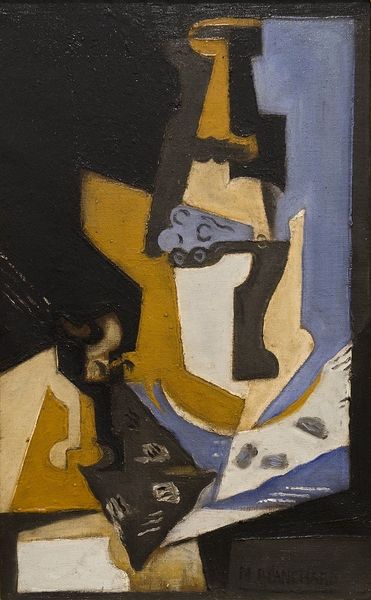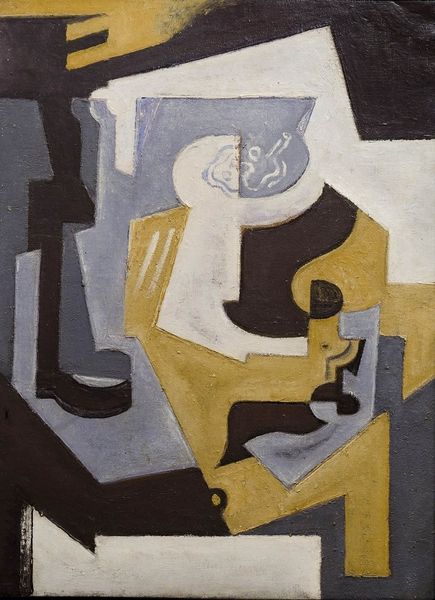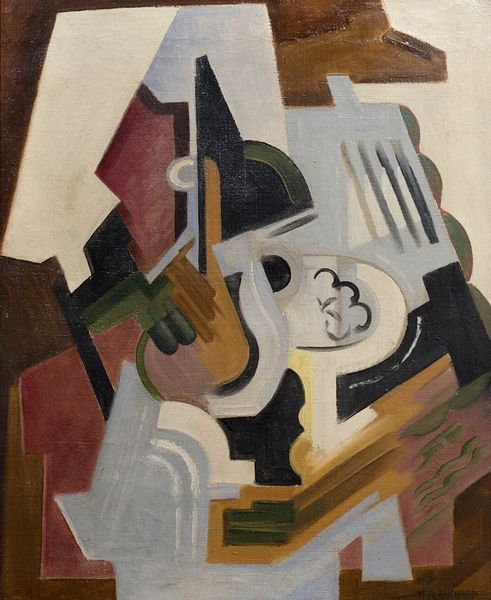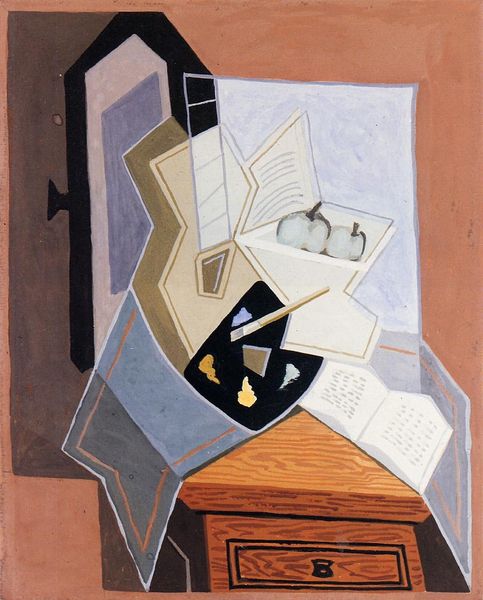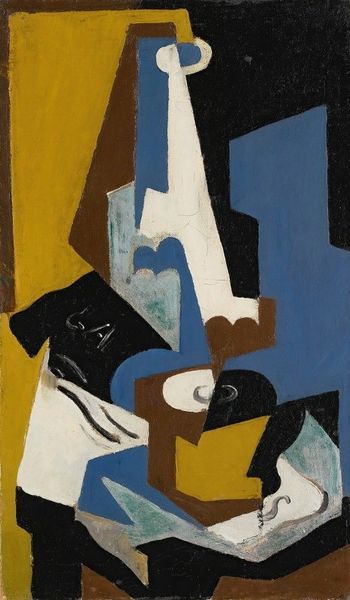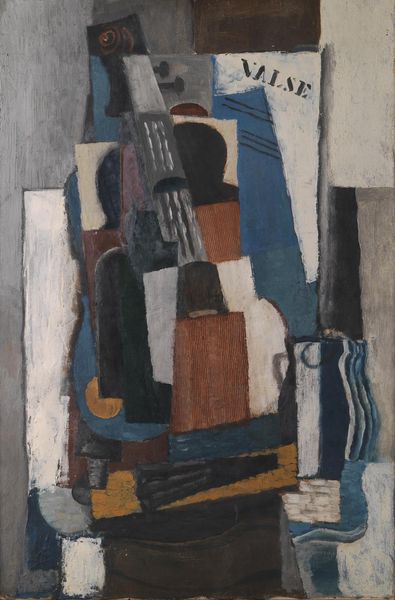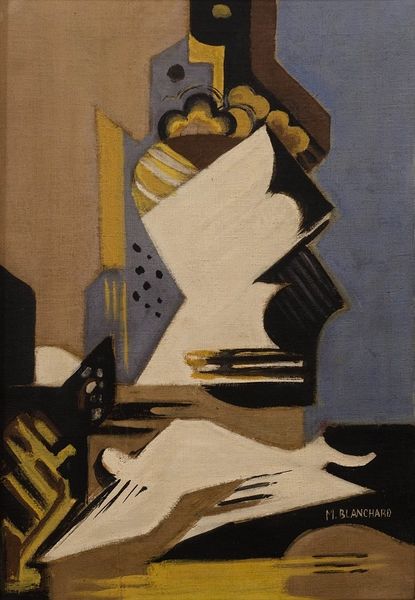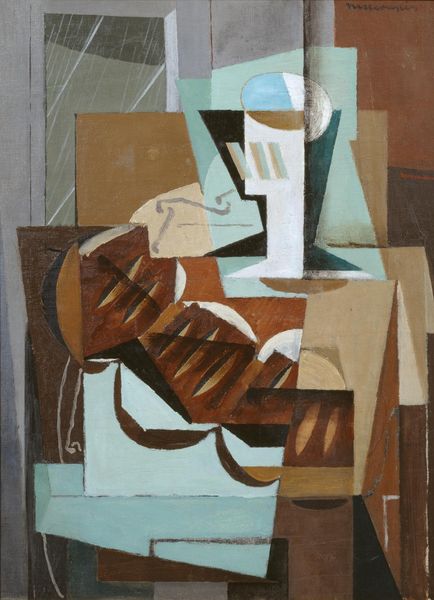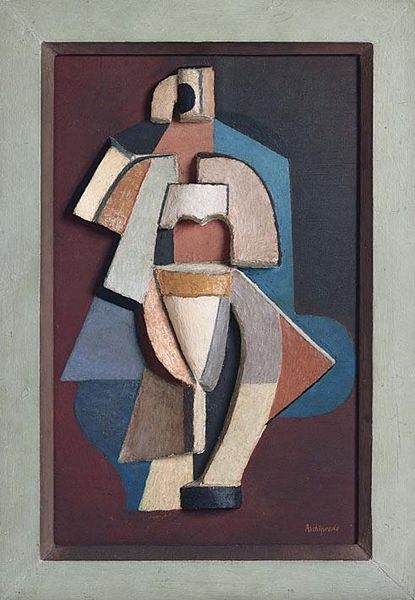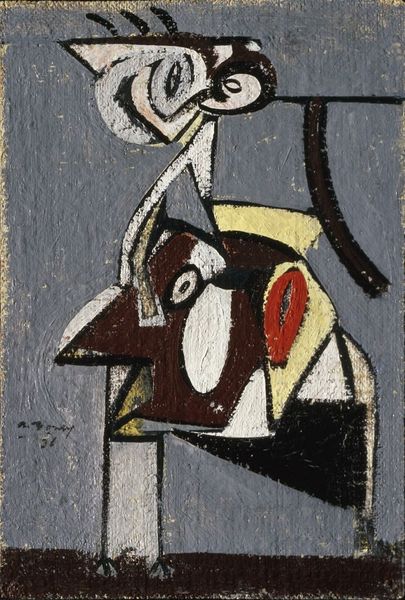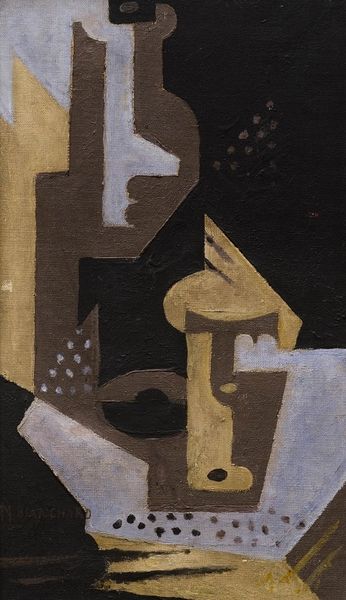
painting, oil-paint
#
portrait
#
cubism
#
painting
#
oil-paint
#
oil painting
#
geometric
#
portrait art
#
modernism
Copyright: Public domain
Editor: This is María Blanchard's "Naturaleza Muerta," painted in 1918, using oil paint. The geometric forms and muted colors give it a strangely comforting yet disjointed feel. What do you see in this piece, looking at its formal aspects? Curator: Precisely. The formal elements are paramount. Notice the fragmented composition, typical of Cubism. Blanchard disrupts our conventional understanding of spatial relations. Observe how the artist dissects the objects, representing them through various geometric forms, not adhering to a singular viewpoint. How would you describe the use of color in relation to the composition? Editor: The colors are quite subdued, aren't they? Browns, blues, grays, whites... they seem to contribute to a sense of balance despite the fragmented forms. The darker background also seems to push the lighter shapes forward. Curator: An astute observation. The limited palette underscores the painting’s emphasis on structure and form over representational accuracy. Consider how Blanchard uses overlapping planes and juxtaposed colors to create depth, or rather, the *illusion* of depth. This creates visual tension, demanding the viewer to actively reconstruct the image in their mind. Editor: So it’s less about what’s depicted and more about how it's depicted? Curator: Exactly. The painting prompts an exploration of spatial dynamics. Semiotics and structuralist theory guide us in this case, where what constitutes 'reality' is entirely dependent on visual arrangement, divorced from context and instead emphasized in the visual language employed within its surface. Editor: That's fascinating. I initially felt a bit lost in the fragmentation, but now I see the intentionality in the structure itself. Curator: And that deliberate arrangement becomes its own kind of meaning, devoid of sentiment. A study in the interplay of form and color above all else. Editor: This really shifts my perspective on Cubism, it makes me rethink the purpose of abstract representation.
Comments
No comments
Be the first to comment and join the conversation on the ultimate creative platform.
